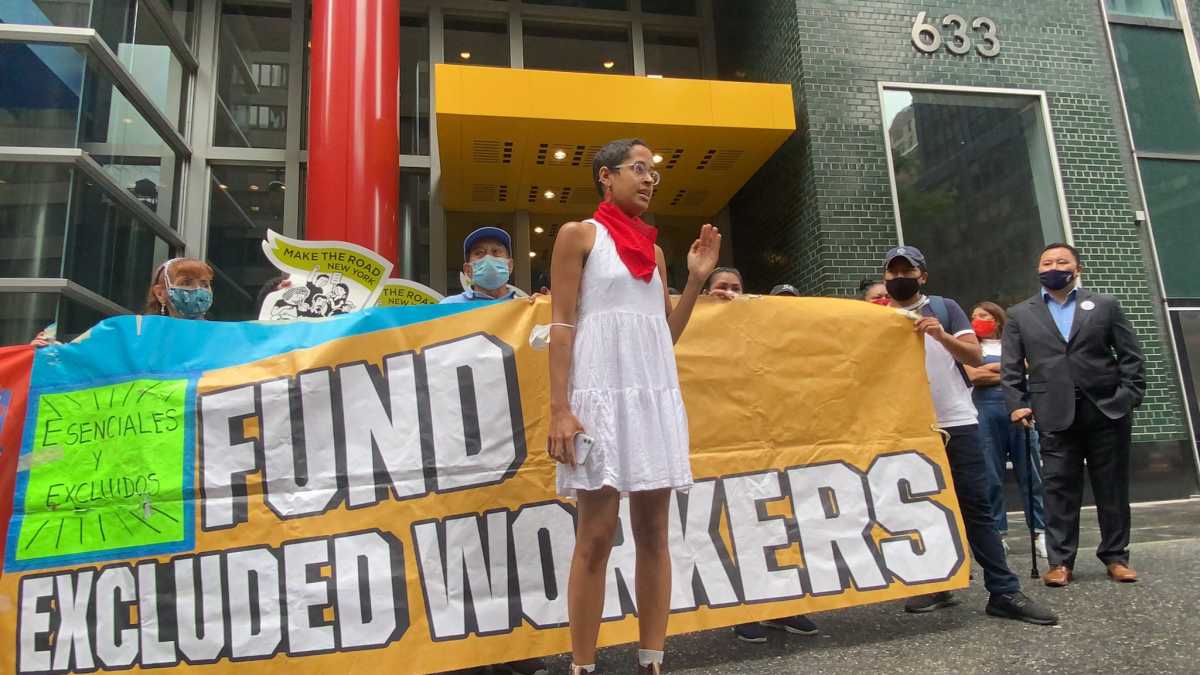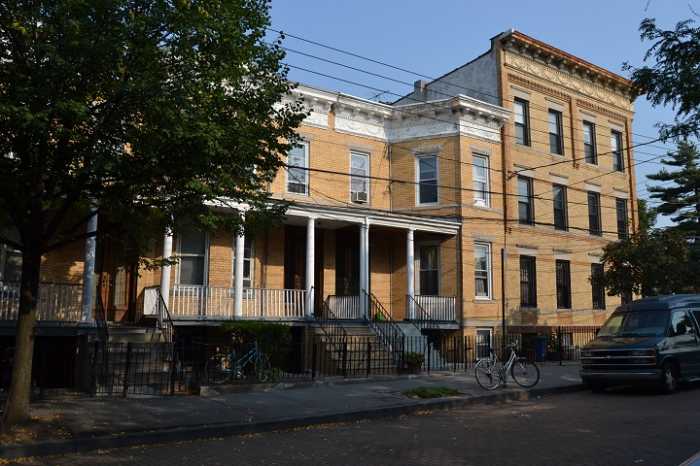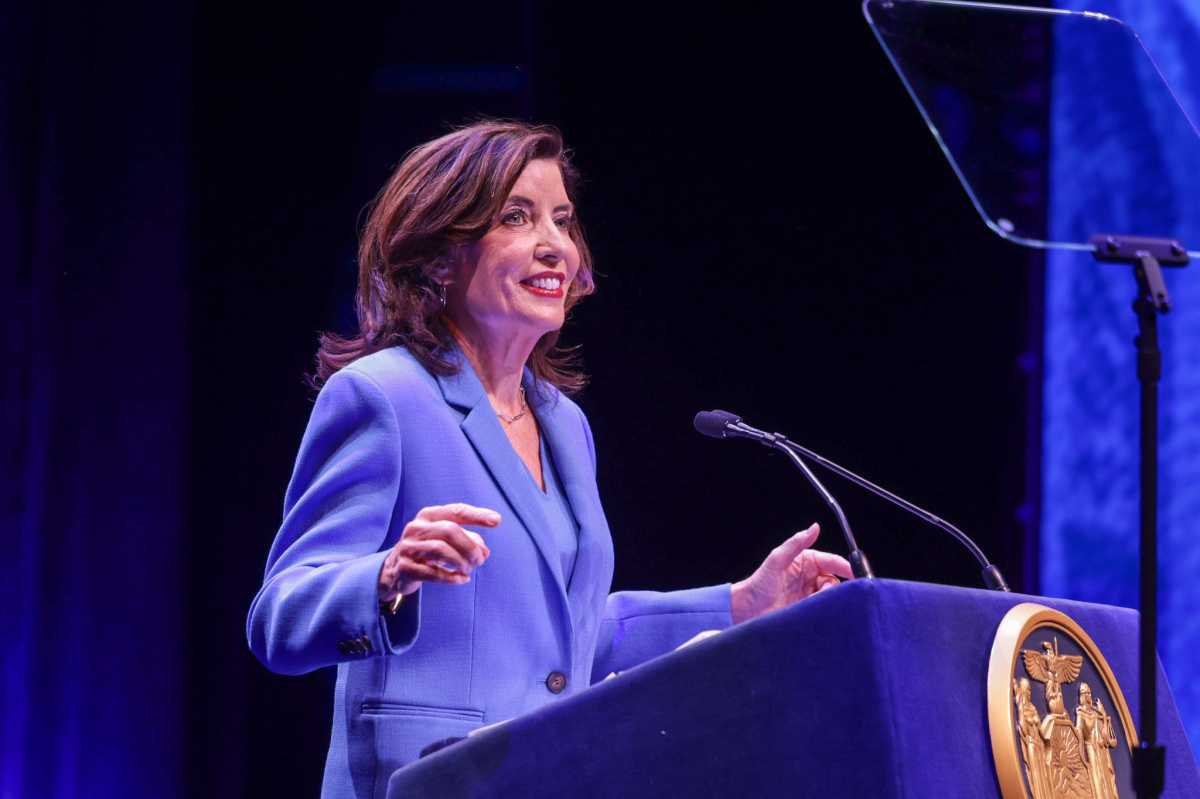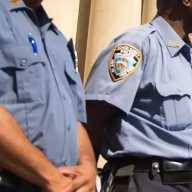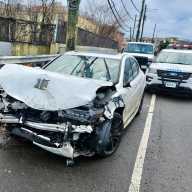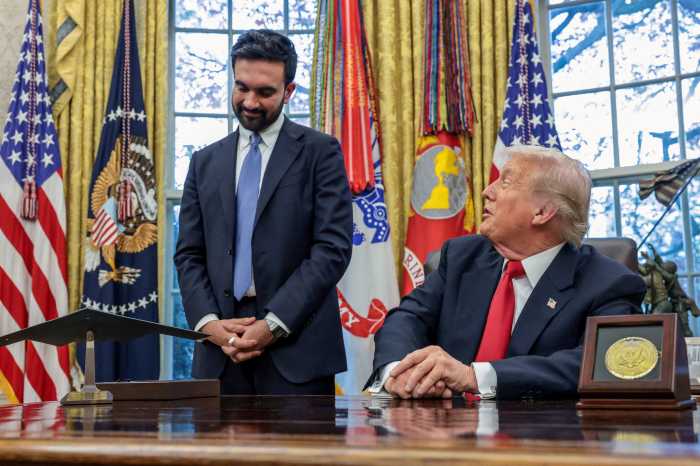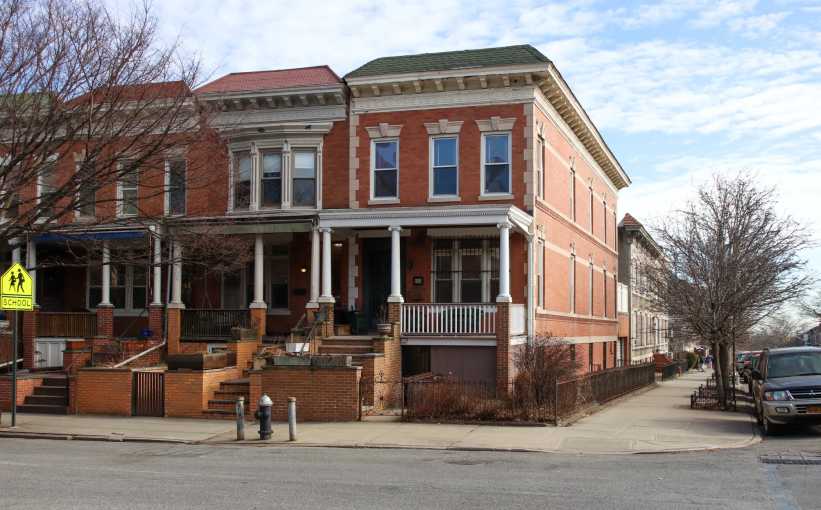Make the Road New York (MRNY) and other activists from across the state rallied outside of Gov. Kathy Hochul’s Manhattan office last week to bring awareness to the shortcomings of the Excluded Workers Fund Program (EWF) that allocated $2.1 billion for people left out of previous relief programs.
The Fund Excluded Workers (FEW) coalition, a campaign of over 200 New York advocacy groups, including MRNY, secured billions in funding this past April after a year of civil disobedience. The organizations held a 23-day hunger strike and a march that shut down the Brooklyn and Manhattan bridges.
The EWF has less stringent requirements which allow undocumented immigrants to receive aid. The fund is not only available to undocumented workers — anyone who was not eligible for and did not receive unemployment insurance or other COVID-19 income relief may be able to receive aid through the EWF.
On Sept. 3, the governor’s office and the Department of Labor announced that $250 million from the EWF has already been released, and an additional $600 million is undergoing final verification for applicants identified as eligible, which is expected to be distributed by the end of the month. Since the program opened online applications, 90,000 people applied in just the first four weeks. Of those, 99 percent qualified for the maximum benefits of $15,600.
Bianca Guerrero, a coordinator for the FEW coalition, said that excluded workers have been waiting for these payments for far too long.
“The demand for this fund is staggering, and the need is absolutely undeniable after receiving nothing from the state and federal government for the entire pandemic: No unemployment, no federal benefits,” Guerrero said.
Guerrero said the coalition is still looking to make some much-needed changes to the program. The first concern relates to cash earners and their inability to prove income to the state to apply for this program. Secondly, some New Yorkers cannot prove residency since they may not be listed on their lease.
The coalition is now calling on Hochul to go back to the drawing board to think of ways to allow New Yorkers different options of proving income and residency to apply to the Excluded Workers Fund Program.
“Organizing made this happen and organizing is what’s going to help us make sure this program helps every excluded worker across the state,” Guerrero said.
Guerrero also said the coalition is concerned that there will not be enough money to support all eligible excluded workers around the state. At the rally, the coalition asked the governor to allocate more funds if the $2.1 billion runs out.
Assemblymember Ron Kim attended the rally and spoke to the crowd about his experience as an immigrant, saying families like his are too often left out from governmental aid.
“It’s not right,” Kim said. “This fund is to correct that. This fund sends the message that, in this country, you can work hard and we’ll acknowledge your hard work. This isn’t charity. You earned every dollar of this.”
However, Kim also said that this fund needs to go even further to include all other eligible workers but are still left behind because of difficulties proving residency and income.
Hochul said when she was sworn in, she made it clear that her top priority was to accelerate relief. She plans to continue those efforts.
“While we are ramping up those efforts, our work still isn’t done,” Hochul said. “We will continue to provide critical assistance to excluded workers, pandemic-affected households that have fallen behind on their rent, and the landlords who saw their rental income drop significantly during the global health crisis.”
Eligible workers receive $15,600 for the first tier, roughly equivalent to annual unemployment insurance payments. The second tier offers $3,200, which equals the amount of the three rounds of stimulus checks that went out in 2020 and 2021 for pandemic relief.

